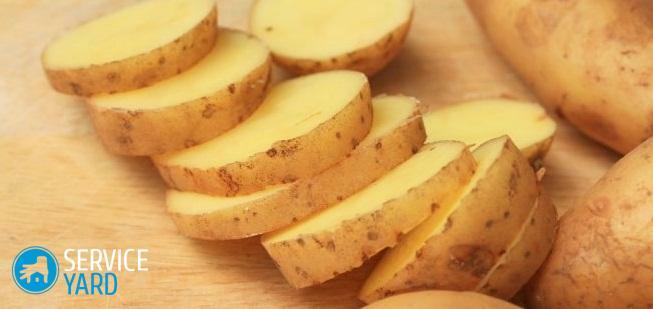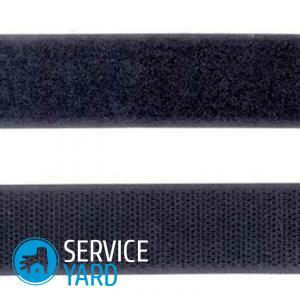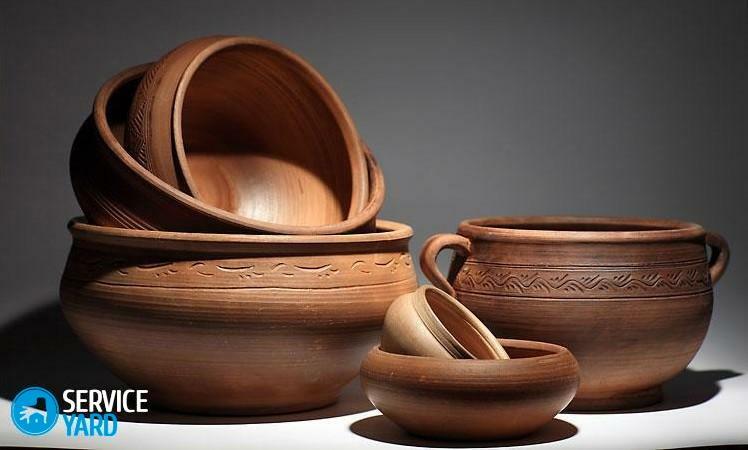When finishing the furnace or fireplace advantages veneering ceramics before aqueous lime solution clear. But that the cover heating device was functional and durable, it is necessary to satisfy a number of conditions, which includes the technology of laying tiles on substrates exposed to heat.

Let us consider how an oven lined with ceramic tiles that, as a minimum, be able to control the process in the performance of third-party contractors.
Types of heat-resistant ceramic tiles
Finish stove or fireplace pottery has several objectives:
- simplifying the daily care of a heater;
- correcting defects body geometry;
- additional sealing outside of the combustion chamber and chimney;
- improving the aesthetics of the heating device.
Means any of these factors, and all of tiled cladding manufactured today to cope with these tasks but oven finish tiles effective and durable only by using heat-resistant ceramic, which is represented by several kinds or varieties:
- tiles - piece ceramic articles, common set being associated artistic component and is designed for a particular furnace draft;
- natural stone - cut or chopped pieces of a certain size from granite, marble, limestone, malachite, sandstone, characterized by high strength and durability;
- granite - an artificial material, not inferior in strength characteristics of natural granite;
- clinker - glazed or without a layer of glaze tile from carefully purified and mixed to homogeneity without the addition of natural clay pigments and plasticizers;
- terracotta - for finishing stoves in rooms with high humidity is suitable monokotturaIn dry conditions - bikottura and its variety - majolica).

Tile adhesives and grouts for finishing ceramic kilns
Facing ceramic heaters naturally requires application of special heat resistant mixtures without losing their strength properties at high temperatures. But, besides the heat resistance, the adhesive mixture to the oven and finish must have sufficient flexibility - to neutralize the difference in the coefficients of thermal expansion of the fabric and bricks housing. Also, compounds must have adequate time "survivability" kneaded possible solution for correcting laid tiles, having a good heat after curing, be resistant to chemical composition and not release harmful to the environment substances.

For laying ceramic tiles on stoves and fireplaces use three kinds of adhesive mixtures:
- solution of the clay - preparing self-mixing a clay, sand and water in proportions depending on the type of clay (loam - 1: 4: 1, normal - 1: 3: 1, the lean - 1: 2.5: 1);
- cement slurry - mixture of cement not lower M-400 and sand in the ratio 1: 3 shuts water to the desired consistency (inclusion PVA increase ductility), the addition of 1 kg of salt on the bucket resulting material increases its heat resistant characteristics;
- ready to use formulations - or dry flowables (based on cement, epoxy, dispersion) intended for a certain type of ceramic tiles.

The choice of adhesive for tiling depends on the cladding material and the base. Typically, instructions on the packaging of the compound contains all the information on the method and place of application.
Mixture for grouting tiles after laying it should also have heat-resistant characteristics. Thus, the more practical compositions of white color, since their hands added for tinting dye under high temperature largely loses its color.

The choice of trowel mixture under the condition that the heat resistance is carried out with reference to the color of the tile and its class - a cheap low-grade grout should not be applied on highly artistic wall.
Finish tiled stove body
Consider briefly how to impose stove tiles, you can not - it is a complex type of work, which is, moreover, carried out simultaneously with the brickwork of a heater. That is, to perform their own quality installation of tiles is laid out on the stove just following the instructions, without practical skills in this work is not realistic.

Therefore, we consider the brick trim heater technology more simple materials - granite, clinker or terracotta, so as a possible facing the nuances in these cases are not associated with ceramics, and other factors - the state of the base, and the layout of the tiles etc.
Substrate preparation
The list of works of surface preparation for tiling depends on the state of the furnace.
Important! If the heater is laid over, the oven should be at least a month to work and settle. During this time there will be an inevitable shrinkage of the machine, after which, you may have to plug the cracks in the masonry. If the stove oblitsevat before the shrinkage deformation will lead to the destruction or peeling finish.
In previously trimmed masonry joints between perform cleaning solution to a depth of approximately 1 cm. This can be a narrow chisel (the seam width) and hammer. Physically easier and faster it can be performed with a small grinder-suhorezom disc but such technology is accompanied by the formation of a large amount of dust.
At the end of recess surface seams carefully cleaned from dust and primed heat-resistant primer, heat resistant up to 300aboutC (below - not good), for example, T-77.

The primer composition on the surface will bind the remaining dust from the smallest base and thereby enhance the adhesion of tile adhesive.
If the furnace is not new and has, on the surface of some old lining (tile, plaster whitewash), the base must be cleaned before the brickwork recess, followed by sutures. Depending on the strength of the old lining are removed it in different ways: a chisel and a hammer, spatulas, with a nozzle-perforator chisel, grinder with a disc-suhorezom. At the end of the surface and primed.

After drying of the primer proceed to reinforcement finished surface, for which is used a steel wire mesh of 1 mm in thickness and mesh size of about 1x1 or 2x2 cm, which is fixed to the masonry by means of screws for concrete, screwing them into the joints between the bricks or them. The mesh is placed in tension, bubbles and folds on its surface should not be. If the fastener screws povlok dustiness of the surface of the grid installation is complete you need to again clean and prime the substrate.

After drying the primer oven heat thoroughly to 50-60 degrees, and when it has cooled to 30aboutC, over reinforcing mesh plastering performed with such calculation to plaster reinforcement layer filled cell to the full depth. After removal of the curing solution is performed furnace geometry defects with the same mixture.
Important! If plastering is carried out with solutions prepared yourself, to improve ductility and resistance to cracking in them add reinforcing fibrovolokno of calculation 300-900 g / cc.

Installation and adjustment of ceramics
Even Coating furnace or fireplace performed a monotonous way, it is necessary to mark the location of the tiles in horizontal rows. If the value of the width of the heater is not an integral number of ceramic products, it is necessary to arrange them so that the first and last elements in the series are the same clipped articles (arranged symmetrically with respect to the vertical line in the middle of a finished wall).
When used for lining cement-based mixture, prepared independently, the porous ceramics (terracotta-bikottura, unglazed clinker) must be pre-soaked for 2-3 minutes in water, when applied to tile solution is not pulled out the water needed for the reaction curing. When using a prefabricated dry mixes containing special additives soak tile of any kind is not needed.
Before the beginning of the furnace lining and is heated.
Cutting and fitting of ceramics executed the following tools:
- Mechanical or electrical-machine Tile;
- bolgarka disk-suhorezom;
- steklorez (for porous terracotta).

Holes satisfied using crown drill bits drilling a desired diameter or perimeter of a circle with a drill tip pobeditovym and subsequent edge processing.

To apply two kinds of solution are used on ceramics spatulas:
- flat - for the application of the mixture;
- gear - to remove the excess glue.

Important! For finishing furnaces ceramic tile is advisable to use the size range less than 20 cm, optimally 10-15 cm, since thermal expansion small articles of magnitude smaller. When laying ceramic tile size seam withstand at least 10 mm - to increase the efficiency of neutralization solution temperature lining extensions.
The width of the tile joints were fixed between the sheets inserted special plastic crosses the right size, which is removed after curing of the adhesive.
And applies the so-called "Dry" method of stacking ceramic - without the use of glue, comprising mounting the tiles on metal frame is fixed on the furnace walls.

Advantages of this method:
- dependability framing fixing tiles (no direct contact with the fuser surface);
- safety and high inertia heater (presence of an air layer between the ceramic and the base);
- ease of performing spot repairs.
Disadvantages of "dry" installation:
- the complexity of providing a high-end aesthetic - require high precision layout the visible part of the frame and high-quality metal components.
Grouting
Construction of ceramic tile joints - finishing operation on the furnace lining, performed 2-3 days after laying tiles.
Important! If used for finishing unglazed clinker tiles, then on both sides along the seam is glued masking tape - it protects the porous ceramics of hard disposable pollution.

For grouting of laying used syringe assembly or flexible spatula (black - hard rubber and white - rubber, softer). After filling the joints with adhesive seam profile shaped - are aligned flush finish or by jointing the respective type made convex or concave.
conclusion
Tiling furnace - operation requiring accounting features of operation finishes. Therefore neglect even minor at first glance, the recommendations of professionals is fraught with damage of materials and a waste of time. From which it follows that, even with the experience of laying ceramic conventional base coat oven for the first time, it is desirable in a pair with a specialist stovemaker.
The main essence of the article
- Laying ceramic tiles - the optimal solution to the problem as oblitsevat brick oven, reasoned practicality, safety and aesthetic material.
- Efficiency of use of ceramics for finishing stoves and fireplaces consists of suitability for use under these conditions each of the materials - primer tile adhesives, grouting.
- Ability to operate at high tile substrate temperature is ensured not only by its heat resistance but also meet special technology laying tiles on a surface heater.
- Facing the oven tiles - a specific type of work that requires knowledge of certain nuances, so the implementation of such a finish is better to make the first time under the guidance of a mentor, a professional.



